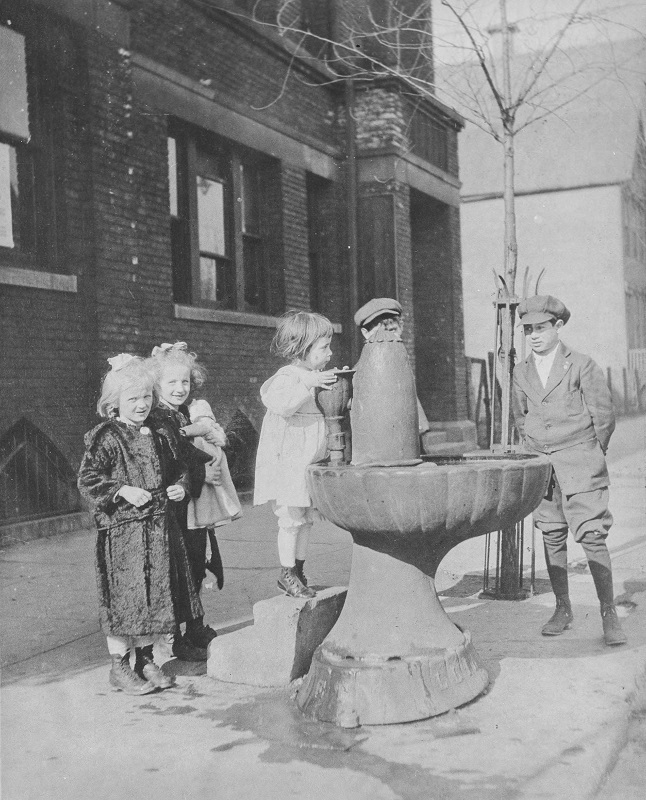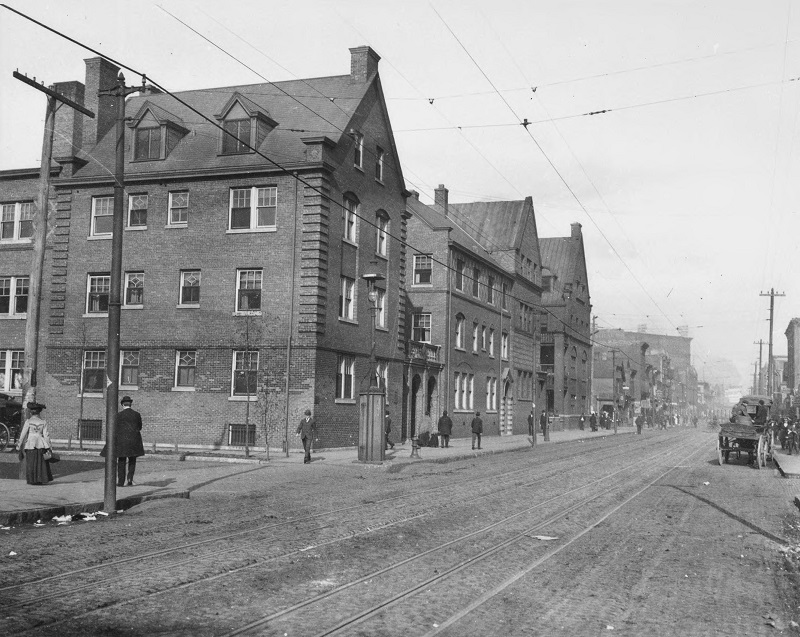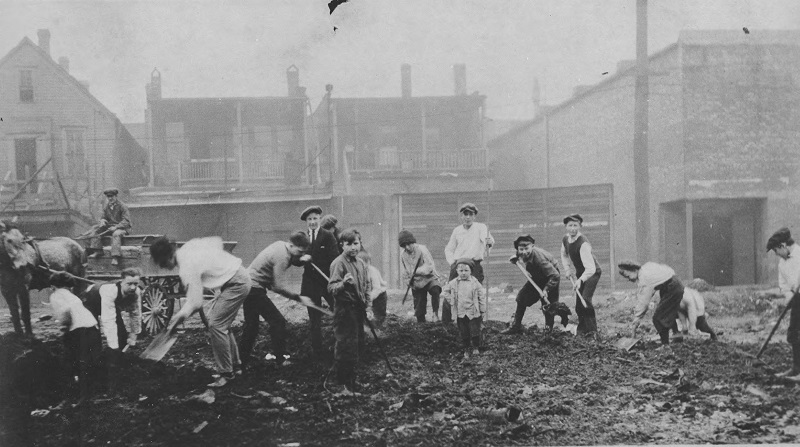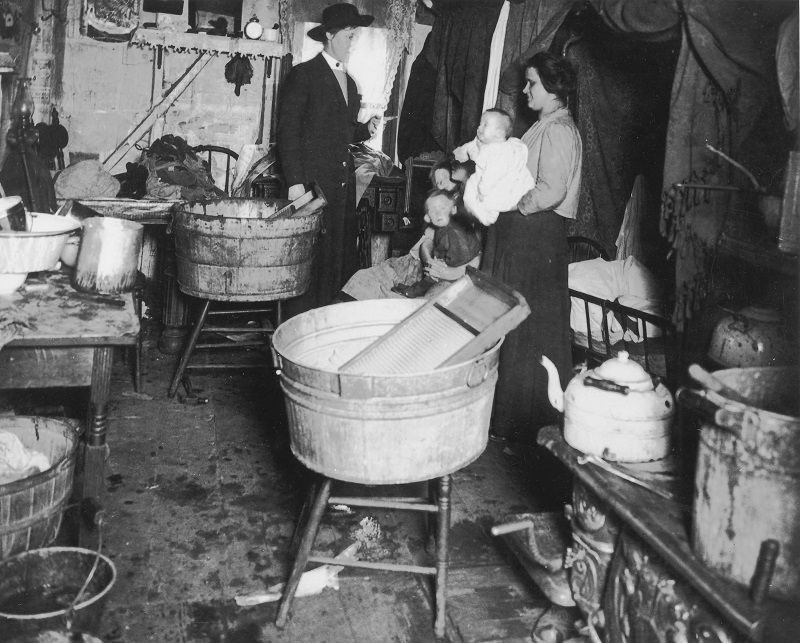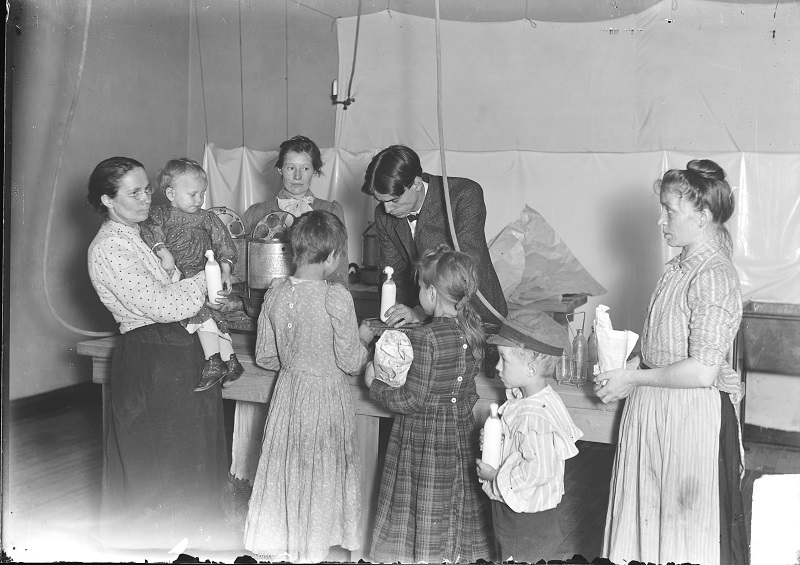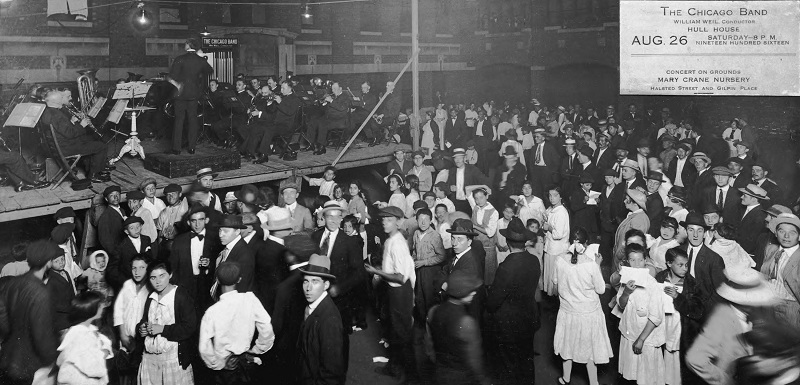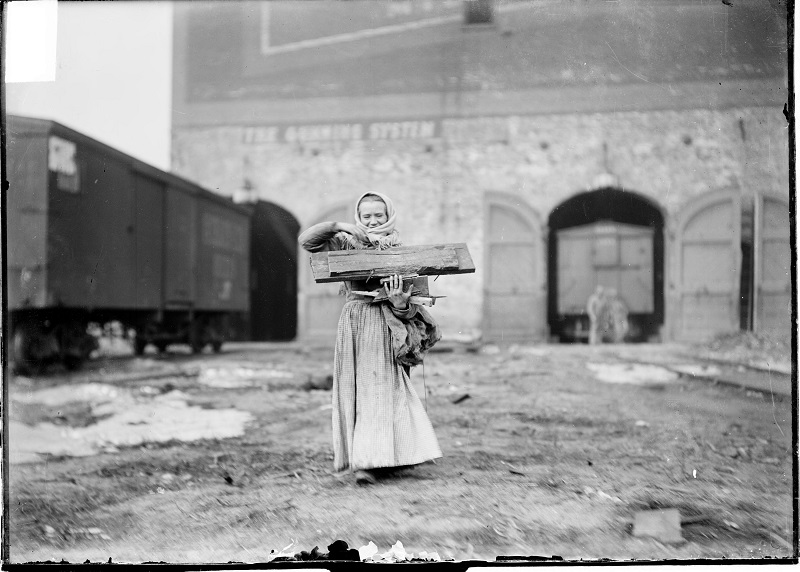The book Hull House Maps and Papers, published in 1895, is a series of essays and statistical information collected by Florence Kelley and her colleagues at Hull House, the settlement house at 335 South Halsted Street.
Subtitled ‘a Presentation of Nationalities and Wages in a Congested District of Chicago,’ this compilation was in fact a set of commentaries focusing on several different topics and communities, e.g. “The Chicago Ghetto” by Charles Zeublin. These were readable, comprehensible narratives of how people lived and worked in the worst slums in Chicago, where the tenements and sweatshops were.
Although the book presents itself unpretentiously as an occasional collection of straightforward essays, the research for this volume took place over several years and occurred under the auspices of different sponsors and projects, directed by Florence Kelley and others. The support of Hull House was critical throughout.
The spectacular maps are modeled upon similar research on poverty and living conditions in London done by Charles Booth. The arresting beauty of these maps, and their economy of presentation of detailed information, have made them classics.
The book was published by Thomas Y. Crowell and Co. (Boston) as part of a series on economics and politics, edited by Professor Richard Ely at the University of Wisconsin.
The information in the maps was collected by Florence Kelley, staff of the United States Bureau of Labor under the authority of Carroll D. Wright, and by the residents of Hull House. The information was collected as part of a national study of The Slums of Baltimore, Chicago, New York and Philadelphia, commissioned by the United States Congress in 1892.
Data were recorded on a series of ‘schedules’, now called data collection instruments, or questionnaires.In order to collect this information, four schedule men from the Bureau of Labor lived at Hull House from April 6 until July 15, 1893. Information on the schedules was copied every night by the residents of Hull House before the schedules were sent to the Bureau of Labor in Washington, D.C.
To collect this information the schedule men and Florence Kelley, the director of the Chicago portion of the research, and their assistants knocked on doors, went into homes and sweatshops, and asked the residents in the designated geographical area questions about their ethnic origins, the number of people in the household, the wages earned by the principal wage earner, and how many weeks the principal wage earner had been employed.
This demographic information was then represented in one of the four maps, as well as recorded on the schedules to be included in the statistical tables of the United States Bureau of Labor Report, The Slums of the Great Cities.
This work, in the middle of the 1893 Chicago summer, was laborious, time consuming, tedious, and path breaking. It built upon prior investigations and research Florence Kelley and others had done for the Illinois Bureau of Labor Statistics, as well as previous research on child labor and other investigations of the tenements and sweatshops in Chicago. It presaged the way information would be collected and presented in the Annual Reports of the Factory Inspector of Illinois.
Next: The Iroquois Theatre Fire

